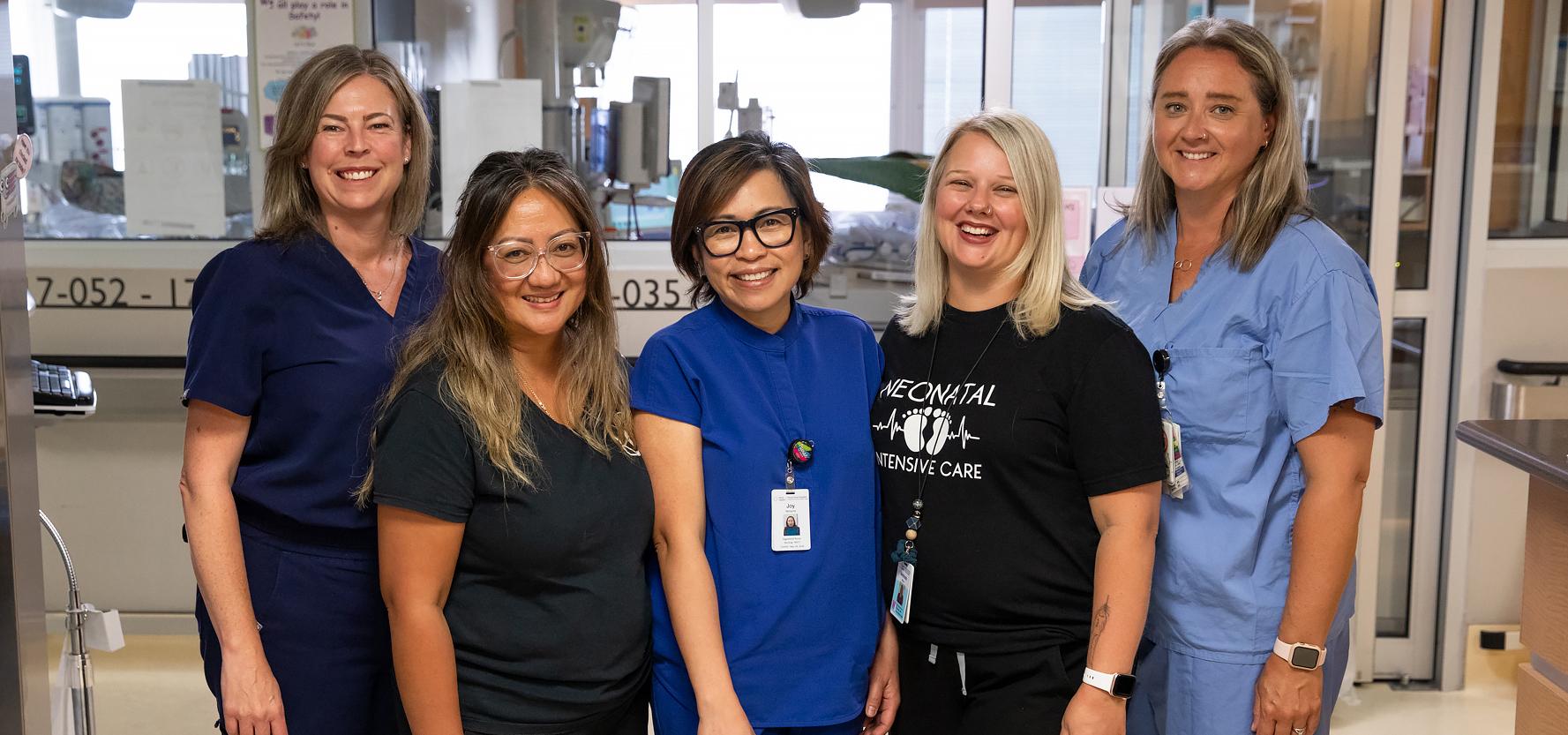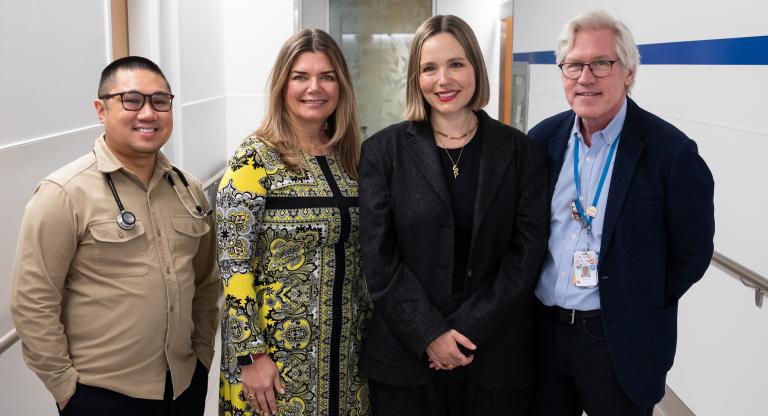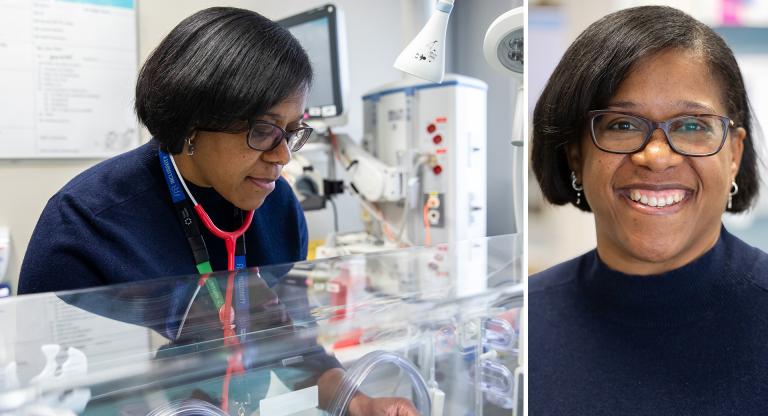Inserting catheters smaller than a piece of string: NICU nurses on providing specialized care to neonates

For the nurses at Mount Sinai Hospital who work with the tiniest patients in the Neonatal Intensive Care Unit (NICU), each day brings unique rewards and challenges. One such challenge is a highly specialized procedure, involving the insertion of a catheter smaller than a piece of string into the vein of a neonate – who sometimes weighs less than one pound.
A peripherally inserted central catheter (PICC) is a soft, flexible tube that is inserted into a vein, either through the arm, leg or scalp. Neonatal PICC line nurses are trained to perform this procedure, which requires incredible precision and sometimes can take up to three hours to insert. For critically ill and low birth weight infants in the NICU who require extended intravenous (IV) access, these nurses offer a lifeline.
We spoke with a few of Mount Sinai Hospital’s NICU heroes to learn what it means to be a Neonatal PICC line nurse. Maritess, Joy and Melissa are part of a team of eight nurses who not only provide highly specialized care to infants in the NICU, but also act as patient advocates, weaving together both art and science.
Why did you decide to pursue a career as a Neonatal PICC line nurse?
Maritess Gonsalves: Obtaining this very specialized role after twenty-five years of service to the Mount Sinai Hospital NICU provided me with an opportunity to advance my career and achieve a higher purpose in caring for vulnerable premature infants.
Describe a typical day working in your field.
Joy Notarte: Our days are spent wearing the many hats of a NICU registered nurse and PICC line nurse. We support the other nurses and families – updating them on the procedure, risk factors, whether the procedure was successful or unsuccessful, and ensuring that the baby will have appropriate access to resources in the Mount Sinai Hospital NICU.
What are the biggest challenges of your job as a PICC line nurse?
MG: Our team is dealt with the pressures of inserting PICC lines sometimes during emergency situations. Placing these central lines into very tiny preemies can take up to three hours of our time, in extremely challenging cases. These PICC lines support with long-term IV access in critically ill neonates for extended antibiotic treatments, administering vital nutrients, among many other things. By placing this PICC line for them, we have also prevented multiple needle pokes in the future. We take on the challenge; sometimes we fail, but when we have success, it’s very rewarding to know that we have created a positive impact on these tiny humans, and we feel that we are contributing to their overall care and helping to improve their outcomes.
What does teamwork and collaboration in your work environment look like?
JN: Inserting a PICC line requires a huge collaborative effort from many team members. We have a good support system from the entire NICU multidisciplinary team, including our team of PICC line nurses, physicians, registered nurses and leadership.
What has prepared you to be able to work in this kind of environment?
Melissa Blow: I started here with only one year of nursing under my belt and I have been at Mount Sinai Hospital for twenty years. I would say to anyone starting out in the NICU to be patient. It takes time to really get in the groove of the NICU and to feel comfortable and confident, but once you do it is so rewarding. It is an ever-changing environment with so much to offer.












